Who can believe we are already moving into the last quarter of 2024? For many businesses this is a really crucial time of year. A time to deliver projects and promises and a time to make plans for next year. It often represents the last chance to reach financial targets or to meet annual goals. Q4 can be a dynamic time but it also can be stressful. This is a period when it really pays to plan ahead and be productive. So, here are 3 tips to plan a productive Q4 to help you optimise your time and performance and finish this year in a productive way!
- Review Your Goals & Priorities
- Make a Realistic Plan
- Track Your Progress
1) Review Your Goals & Priorities
Start by reviewing the goals set for 2024. Identify what is outstanding and add anything new. Then set your priorities by considering:
- What needs to be achieved by the end of 2024?
- What can be moved to Q1 2025
You may find that it simply isn’t feasible to accomplish everything you want or have been asked to do. In Q4 you can’t waste time on tasks that don’t move the needle for you or the business. It helps to use a prioritisation model such as:
- Must do
- Should do
- Could do
Must Do – High Priority
Work that:
- Is business or role critical
- Relates to deliverables and perhaps KPI’s
- Involves key stakeholders
- There will be issues if it is not done
Should Do – Medium Priority
Work that:
- Is not critical but would add value
- It may not be noticed but would be good for the business
- It may relate to the additional 20%, the extra feature, not the core essentials
Could Do – Low Priority
Work that:
- Can be described as ‘”nice to have”
- It is not essential or core
- It may be a someone’s ‘Passion Project’ or something they enjoy doing but not critical within their role
When capacity is tight, prioritise the ‘Should Do’ goals and tasks that will make the biggest impact.
When there is more capacity, it may be an opportunity to work on some of the Should and Could Do priorities.
2) Make a Realistic Plan
Now it is important to break down the high-level goal or project into smaller sub-goals and lists of tasks, so that there is clarity about what actually needs to be done.
A team brainstorming session can achieve this drill-down while engaging people and getting a great cross-section of ideas. Capture the information in a Team Planner that can be shared or displayed for all to work on. Assign a person to each task and agree the target completion time. You can access an Excel Q4 Team Planner Template on our Resources page here. (www.beproductive.ie).
Now the work can be included in the weekly team plans and individual To-Do lists. But be realistic about how much time is available for “planned, proactive” work amongst the day-to-day operations of the business. It is better to under-plan than over-plan as the latter is not only unrealistic but demotivating
3) Track Your Progress
As the work gets done, track progress by capturing completion dates. If the target dates are being missed, understand the reasons why. Without this insight you can’t achieve the goal.
Do the priorities need to be reviewed? Has new work emerged that is competing for people’s time? Do you need to ask for more resources?
Extend your timeline if necessary so that it is achievable but, of course, update the relevant stakeholders.
Finding Time for Planned Priority Work
We all know that our time can disappear very easily. So it is important to proactively protect it for the ‘Must Do’ work. Because if you do not, lots of other things (and people!) will steal it away.
Block time in your diary at the start of each week for your priority work. And then, stick to it. Don’t give this time away easily when other things crop up. You can also try to gain back time with these ideas:
- Keep meeting time short (45 minutes max)
- Decline non-essential meetings
- Say No to lower priority work
‘Saying No’ is one of the hardest skills in business. But it can be the right decision if the request is a lower priority than your planned work. Explain why you are saying no and suggest an alternative time or solution. So you are actually saying yes but on your own terms.
Find What Works for You
Like all our productivity tips at beproductive.ie we recommend that you: 1) tweak this planning approach to find what works best for you and your business.
I hope you have a productive Q4.
If you enjoyed this article, why not check out all our Productivity, Wellbeing and Time Management resources and tips at beproductive.ie?
Written by Productivity Consultant Moira Dunne, founder and director of beproductive.ie.




